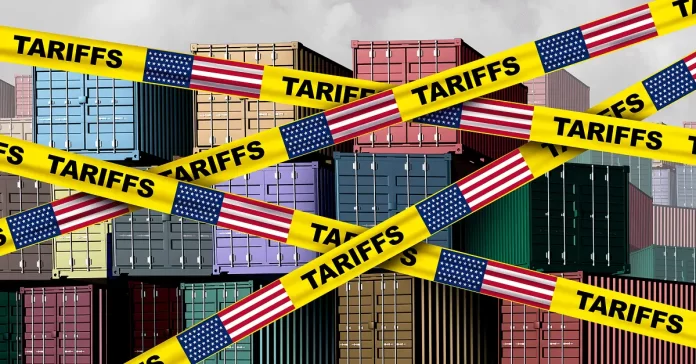What’s The Economy Looking Like As China and Canada Retaliate Against Trump’s Tariffs
President Donald Trump’s 25% tariffs on imports from Mexico and Canada went into effect on Tuesday, aiming to pressure trade partners into addressing cartel activity and drug trafficking. However, the tariffs risk destabilizing the North American economy, potentially worsening inflationary pressures in the United States.
In addition, Trump doubled tariffs on Chinese imports from 10% to 20%, further escalating trade tensions. In response, China and Canada quickly imposed retaliatory tariffs on American goods, raising concerns about a full-scale trade war.
Economic Fallout and Consumer Impact
The new tariffs will likely lead to higher prices for American consumers, as Mexico, Canada, and China accounted for more than 40% of total U.S. imports in 2024, totaling $1.4 trillion. Essential goods, including fresh produce, electronics, and auto parts, are expected to become more expensive. While crude oil imports from Canada will face a lower 10% tariff, most other imports from these countries will see the full 25% duty.
The economic impact extends beyond consumer prices. The Federal Reserve Bank of Atlanta’s latest GDP forecast signals a possible 2.8% contraction, reflecting declining consumer spending and increased import costs ahead of the tariffs. While the U.S. economy grew at an annualized 2.3% rate in late 2024, signs of weakening consumer confidence have emerged.
Key Economic Indicators: Inflation, Jobs, and Housing
- Inflation: The Consumer Price Index rose to 3% over the past year, continuing to squeeze household budgets.
- Employment: The unemployment rate declined to 4% in January, with 143,000 jobs added.
- Housing Prices: The median U.S. home price climbed to $446,300 in January, marking a 7.54% increase from December.
Higher tariffs are expected to exacerbate inflationary pressures, particularly in the auto industry. The cost of producing vehicles in North America could rise between $3,500 and $12,000, according to analysts, pushing car prices even higher. In January, the average price of a new car had already surged to $48,100, nearly $10,000 more than pre-pandemic levels.
China and Canada Strike Back
China responded swiftly, imposing a 15% tariff on U.S. chicken, wheat, corn, and cotton, alongside a 10% tariff on soybeans, pork, beef, dairy products, and seafood. Additionally, China restricted exports to 15 U.S. companies, including drone manufacturer Skydio. Analysts suggest China’s retaliation is designed to pressure key industries that support Trump’s administration while leaving room for potential trade negotiations.
Canada also announced countermeasures, further heightening trade tensions. The combined impact of these retaliatory actions could deepen economic uncertainty, potentially derailing economic stability in North America.








